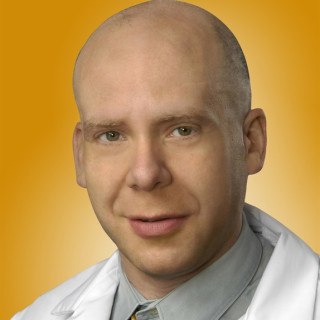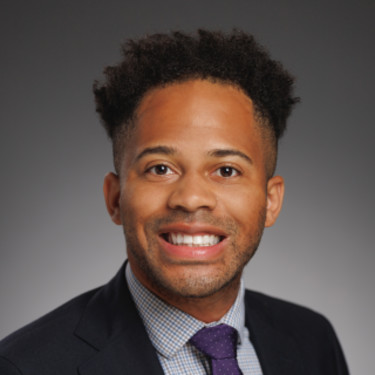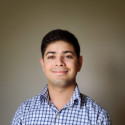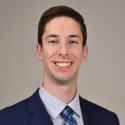It was again — to borrow a term from my son’s favorite author, Dav Pilkey — a ‘supa’ busy week at the 2024 annual Radiological Society of North America (RSNA) meeting. The conference was held, as usual, in Chicago at McCormick Place, starting the Sunday after Thanksgiving. The world’s largest radiology convention, at its appropriate venue, the largest convention center in the U.S. Attendance was still a bit down from the height of the pre-COVID-19 era. Still, positive energy filled the halls and the hallways of McCormick.
There is a distinct and increasing international presence at the RSNA. The electronic educational exhibits — about 1,500 of them — were contributed by primarily non-North American authors, particularly from Brazil — and the RSNA is increasing its involvement of international radiologists in the meeting and their committees and journals. There were two featured countries this year: Peru and Japan. Dr. Kei Yamada from Kyoto organized and led the “Japan Presents” session. Dr. Yamada offered a frank and sober picture of radiology in the broader context of Japan’s health care system, which is dominated by general practitioners. There are also two and a half times more neurosurgeons per capita than radiologists, and non-radiologists perform about half of all diagnostic imaging in Japan. The last speaker in the session, a prominent female radiologist, noted slow but real progress in the opportunities for women in Japanese radiology.
One personal theme was ‘Challenging Cases.’ I got to compete in a ‘multi-system’ “Jeopardy!”-type contest on Sunday afternoon. These are now scattered throughout the meeting and are very well attended. As a contestant, one must simultaneously entertain, educate, and sometimes surprise the competition and/or the audience. After a relatively slow start, our multi-institutional and multi-national team went on to win. It helps to be a generalist. I got to quote Dr. Eric Stern’s ‘third-circle of film panel hell’ scenario: the moderators show you a case (in this instance Rosai-Dorfman disease, involving the paranasal sinuses), you blow it, and then you realize, or the moderators tell you, that you had previously published a paper about this specific scenario (years ago, in the American Journal of Neuroradiology, in this case).
I also answered several days of online ‘cases of the day’ for all provided categories. Again, it helps to be a generalist. For a ‘newbie’ participant — although I used to contribute cases to the emergency radiology section — I did rather well, and as a bonus you get CME credit! They are now multiple-choice questions — they used to be ‘free text’ answers — but they are still, overall, very difficult cases. And yes, you can use artificial intelligence (AI) and Dr. Google to help you; it is an open-book test.
The topic of AI, as expected, was ubiquitous throughout the meeting. In addition to the literal hundreds of smaller to medium-sized AI companies and start-ups with booths at the technical exhibits in the AI Showcase Area, there are now booths from companies like Microsoft and Amazon, which was not the case just a few years ago. AI dominated many aspects of the program. Yet, paradoxically, “simpler” technologies such as the audience response system used for multiple educational courses and streaming the meeting on the internet, live and shortly after courses ended, experienced glitches in the earlier parts of the meeting, which were subsequently fixed. There seems to be a bit of a technology gap to me.
I found the plenary lecture from a distinguished professor at Yale, Dr. Nicholas A. Christakis, who bridges sociology, medicine, and AI, to be particularly interesting. When AI is ‘dumbed down,’ his lab has shown, in numerous experiments and publications, that it can improve a variety of human interactions, and we can understand what AI is doing here, it’s not a black box.
Radiology-related art — something we had a poster on years ago at the meeting — was now almost everywhere at McCormick Place. There was even a “photo opportunity 3D booth.” And there was the obligatory “CAT scan” art, with kitties surrounding a CT scanner. Not exactly original, but adorable.
I attended departmental and committee meetings and events, as usual, where folks as close as down the block, whom I wouldn’t otherwise see routinely, were welcome faces. The annual meeting does bring us closer together. I also caught up with old friends and colleagues from around the country and the world, from San Francisco to Patagonia and Asia. I returned to my old favorite haunts and tried a new top-tier sushi establishment. I discussed second career paths and pondered the state of radiology and of the world.
Regarding second career paths, the final refresher course I attended, in addition to the several courses I participated in as faculty during the week, was on the topic of ‘pivoting in radiology careers,’ given by several colleagues in emergency and general radiology. I was very pleased that the final slide of the meeting was a citation of my recent work on the topic. This led to an insightful discussion of climbing the ‘second mountain’ and how to keep your career fresh and exciting, years into practice, academic or otherwise.
Until next year! Domo arigato!
Douglas Katz, MD, is a radiologist in Mineola, NY. He has no conflicts of interest to disclose.
Illustration by Jennifer Bogartz







